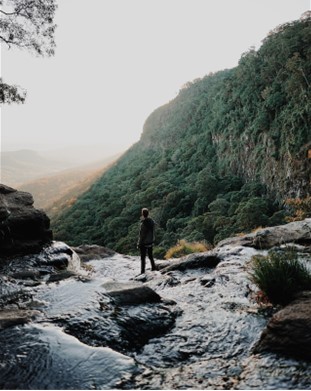
Utah is home to spectacular natural wonders that most people don’t expect to find in a desert environment. There are numerous, awe-inspiring attractions where people can connect to nature. Places such as Mirror Lake, Canyonlands National Park, Zion National Park, Great Salt Lake, and Grand Staircase-Escalante National Monument are some of the highlights, and are discussed in further detail below.
Additionally, Second Nature Utah reviews how individuals who participated in wilderness therapy, and have developed a love for nature, can continue to find solace in the natural wonders of Utah’s landscape.
Utah’s Best Destinations for Connecting to Nature
As five of Utah’s most spectacular natural destinations, the following locations are sure to encourage the development or strengthening of a reconnection to nature in every individual who experiences them. Keep in mind, these are just a handful of sites the Utah landscape has to offer, there is so much more to see, do and experience in Utah.
Mirror Lake
Mirror Lake is one of the state’s hidden gems. It isn’t a typical tourist area, and its seclusion makes it even more wonderful to experience on a solo trip. Its still waters, magnificent tree line, and mountain views ensure that every individual that steps foot on its shore will immediately feel like they belong there. This is one of the most ideal locations for bonding with nature, meditating, and finding peace.
Canyonlands National Park
Canyonlands National Park is home to both The Needles and Island in the Sky. These tourist attractions are 100% natural and do nothing if not inspire. Canyon overlooks, hiking trails, and off-roading opportunities are plentiful here; everyone can find joy in this park no matter what form their adventurous spirit takes. Forming a lifelong connection to nature is one of the many perks of visiting.
Zion National Park
Zion National Park is the place where adventurers go to soothe their restless spirits. With countless opportunities for hiking and canyoneering at every experience level, this national park is a premium destination for developing an all-encompassing appreciation for nature. This tourist destination combines expansive blue skies, plenty of greenery, and slot canyons; is there a better combination of natural elements anywhere else?

Great Salt Lake
Great Salt Lake is a unique, and special destination: it is the largest saltwater lake throughout the entirety of the western hemisphere. Its salinity (salt content) is even higher than that of the Pacific Ocean. This makes it perfect for swimming and other water-based activities. The wildlife and sandy beaches ensure that every visitor will want to stay forever: it is a place of restoration, inner-connectivity, and awareness of micro-habitats.
Grand Staircase-Escalante National Monument
Grand Staircase gets its name for its natural staircase presence that is composed of several plateaus at various elevations between Bryce Canyon and Grand Canyon. At the site of each drop from one plateau to the next, the rock wall features a snapshot of history. Originally home to Native Americans, this monument encompasses 5 different ecosystems; its an awe-inspiring spot to re-connect with oneself, and the world around them.
Final Thoughts
Whether one, or all of these five destinations end up on a must-see list, it will be impossible for those looking to reconnect with the world, and find healing and inner peace not fall in love with the beauty and nature that Utah provides.







